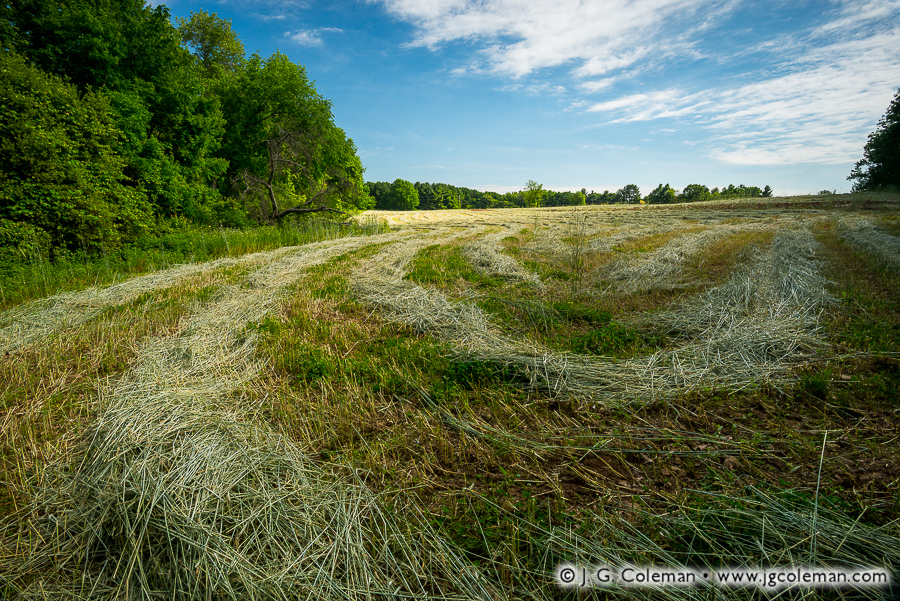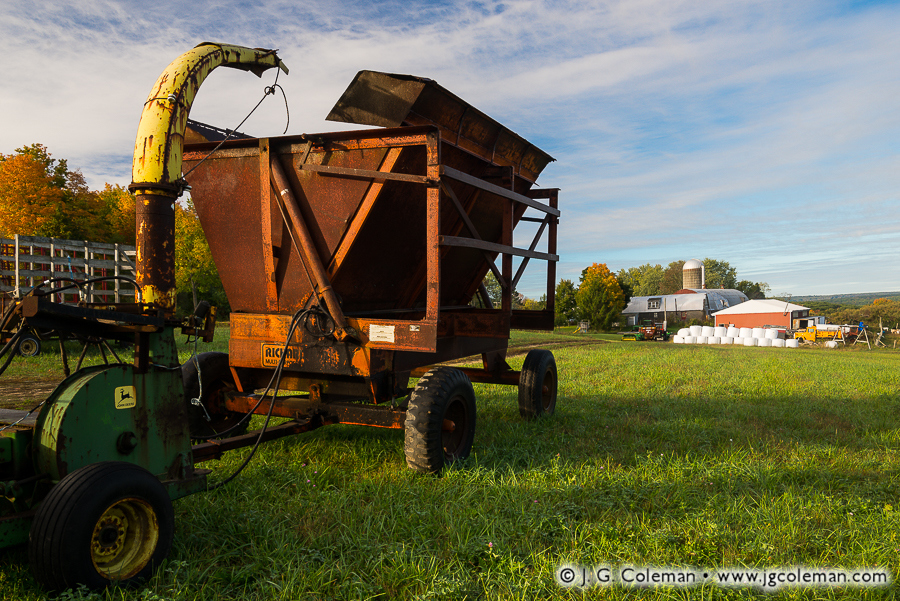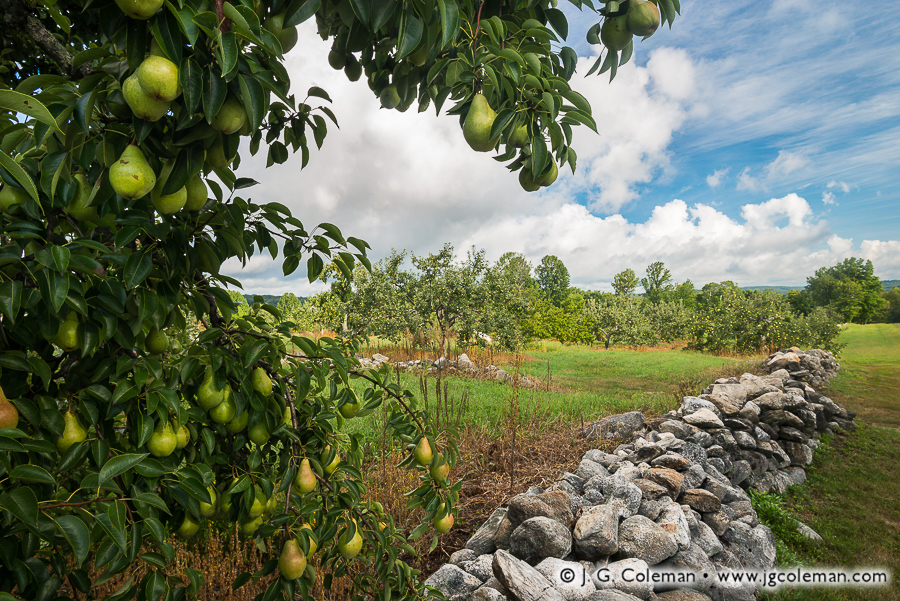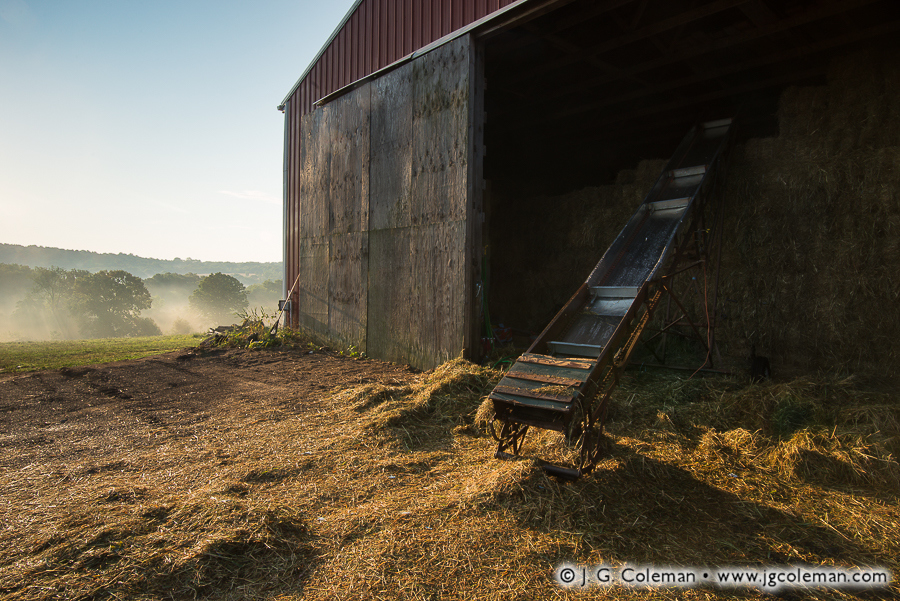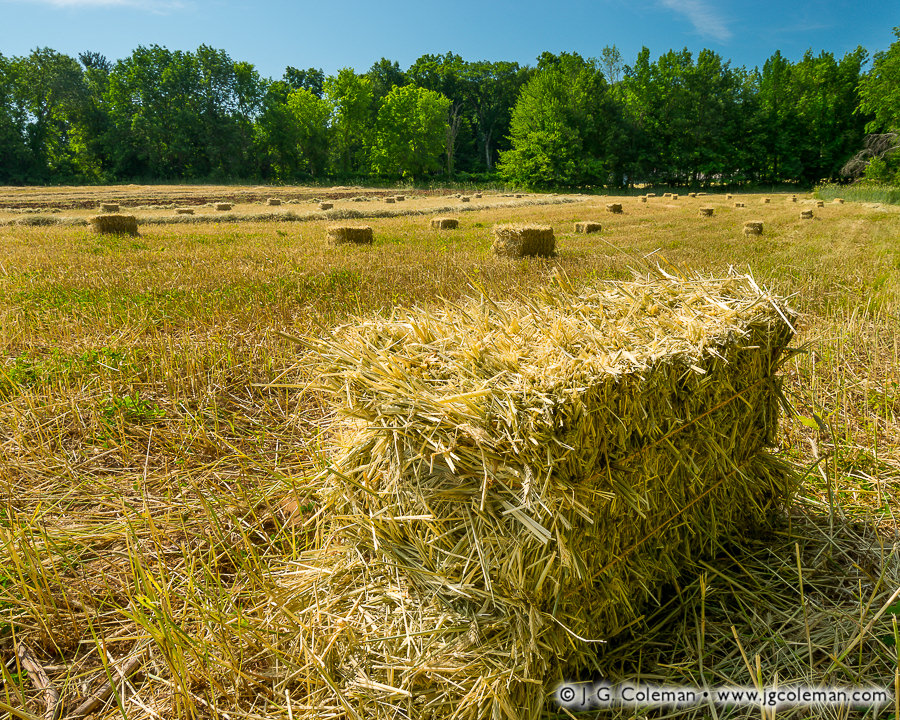
Square bales and windrows in hay field, Bloomfield, Connecticut
© 2016 J. G. Coleman
Summertime sunlight beats down on a warm field dotted with freshly-bound hay bales. Looking toward the wooded field edge in the distance, we find windrows of drying hay awaiting the baler once the tractor arrives for a new day’s work.
Despite their rectangular shape, bales of hay such as these are typically referred to as “square bales”. Weighing in at only about 50 pounds, they offer the convenience of being easily moved by hand. That’s something which certainly can’t be said for larger, round bales which can weigh up to a ton and must be moved with a tractor.
But while square bales are easy to handle, you’ll generally find them only at smaller farms. Large operations produce and use so much hay that juggling all those tiny bundles would prove overwhelming. For all of the labor involved in loading, hauling and stacking a dozen square bales, it tends to be far more practical to fire up the tractor and move just one half-ton, round bale.
Purchase a Fine Art Print or Inquire About Licensing
Click here to visit my landing page for “Yankee Farmlands № 71” to buy a beautiful fine art print or inquire about licensing this image.
Want to See More?
Be sure to check out all of the work from my on-going Yankee Farmlands project.


